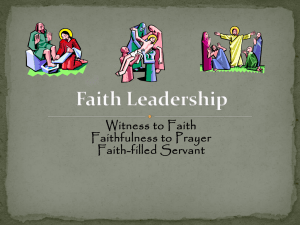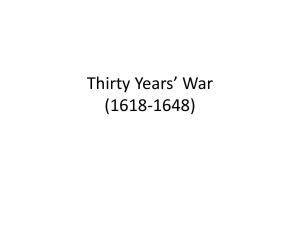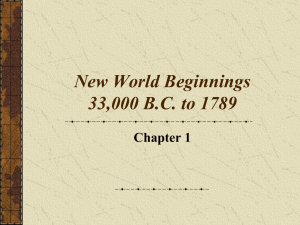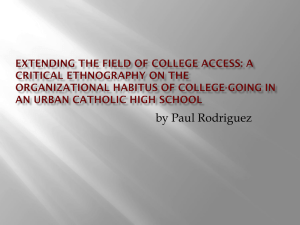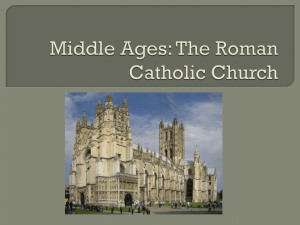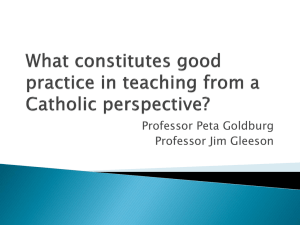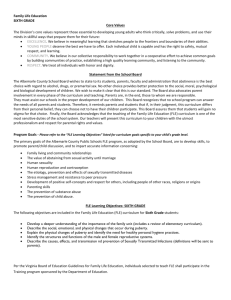PowerPoint - Catholic Curriculum Corporation
advertisement
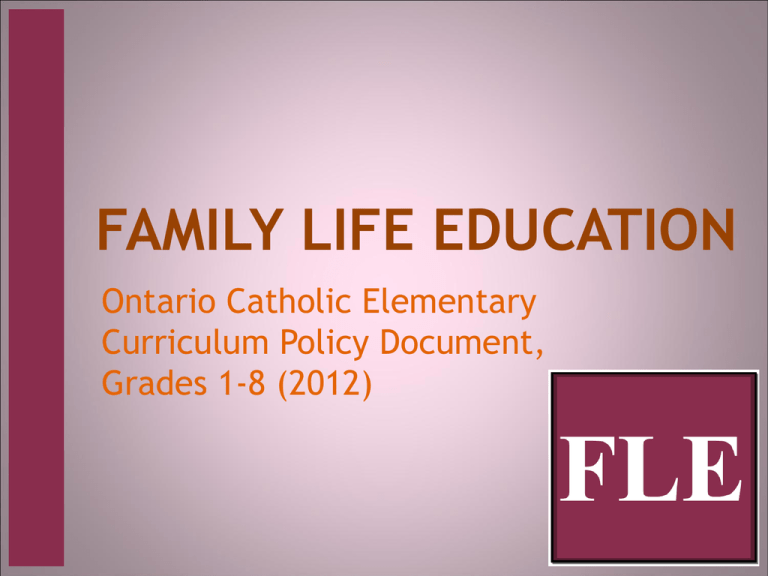
FAMILY LIFE EDUCATION Ontario Catholic Elementary Curriculum Policy Document, Grades 1-8 (2012) A first for Catholic educators in Ontario • The Fully Alive program of the Bishops of Ontario has been an integral part of the Catholic elementary school curriculum for more than twenty years • The Ontario Catholic Elementary Curriculum Policy Document, Grades 1-8: Family Life Education (2012) aligns this program with curriculum policy A document walk-through • This purpose of this presentation is to highlight the key aspects of the curriculum policy document for Family Life Education • Specific pages will be referenced • Educators will require a print or electronic copy of the document • An electronic version can be found at www.iceont.ca Contents • Introduction • The Program in Family Life Education • Assessment and Evaluation of Student Achievement • Some Considerations for Program Planning in Family Life Education • Overview of Grades • Appendix: Learning Summaries by Strand • Appendix: Catholic Church Teachings on Family Life Ed Introduction • The Ministry of Education granted permission for the extensive use of the elementary Health and Physical Education policy document (pg. 1) • Direct excerpts from the ministry document are indented and referenced by page • Content specific to FLE follows the excerpts, often with the phrase, “In Ontario Catholic schools…” Catholic documents are highlighted • Throughout the document, key resources from our Catholic tradition are cited (e.g. Ontario Catholic School Graduate Expectations – pg. 1) • Scan through the document • Identify other Catholic resources in the Introduction • Be aware of other Catholic resources in the remainder of the document Vision The family life education curriculum is based on the vision that the knowledge, skills, attitudes and values acquired in the program will benefit students throughout their lives and help them to thrive in an ever-changing world by enabling them to acquire a Christian vision of personhood, relationships, and sexuality and to develop the comprehension, capacity, and commitment needed to lead fully human lives The Program in FLE • The policy document identifies the expectations for each grade and identifies the knowledge, skills, attitudes, and values that students are expected to acquire, demonstrate, and apply (pg. 10) • NOTE: educators do not assess attitudes and values (footnote pg. 10) Take a moment to become familiar with the elements found on a curriculum expectations page, as noted in the diagram on page 11. The Strands in FLE • Correspond with the themes of Fully Alive program – A: Created and Loved by God – B: Living in Relationship – C: Created Sexual Male and Female – D: Growing in Commitment – E: Living in the World • See pp. 12 to 17 for strand descriptors Overall Expectations • Describe in general terms the knowledge, skills, attitudes and values that students are expected to demonstrate • There are three overalls per strand • The overalls are repeated in constant terms for each strand from grade to grade pg. 62 Within the same strand (A: Created and Loved by God), the Overalls are identical from grade to grade. This reflects the developmental nature of the curriculum from grades 1 to 8. pg. 92 pg. 75 From strand to strand, the Overalls are of the same type: Overall 1 – Appreciating God’s Goodness Overall 2 – Exploring Human Nature Overall 3 – Reflecting, Responding, and Analyzing Pg. 62 Specific Expectations • Find their source in Fully Alive • Expectations of two types – cognitive and affective • Affective expectations are generally clustered under Overall Expectation 1 and may not be appropriate for evaluation (see pg. 20) Assessment and Evaluation • A value is assigned to represent the quality of student work may be a letter or percentage grade, or an anecdotal comment, according to Board practice • Again, it is inappropriate to try to evaluate matters such as a students’ spiritual or emotional life, and their progress in moral development (pg. 18) The Achievement Chart • Take a moment to become familiar with the achievement chart for FLE on pages 24 and 25 • Note the similarities and differences between this achievement chart and those in other subject areas Some considerations for program planning in FLE Some points of note include: • The curriculum allows students to come to a deeper awareness of self; and teachers of students (pg. 27) • There should be at least four religious education classes for every one FLE class (pg. 28) • At times, it may be appropriate for males and females to learn separately (pg. 29) • FLE expectations provide opportunity to develop the learning skills articulated in Growing Success (pg. 31); the living skills of Health & Physical Education (pg. 33); and the Healthy Living expectations of Health and Physical Education (pg. 33-35) • The current provincial report card does not have an IEP box (footnotes pg. 37 and 38) • The FLE curriculum is a lifeaffirming, developmental program that honours the dignity of every student (pg. 39) • The FLE curriculum supports many Ministry of Education foci: – Environmental education (pp. 42-43) – Healthy relationships (pp. 43-44) – Equity & inclusive education (pp. 44-45) – Literacy and inquiry (pp. 45-47) – Critical thinking/literacy (pp. 47-49) – Financial literacy (pg. 53) Overview of grades • Precede the expectations for each division – primary, junior and intermediate (for example, pp. 54-59) • Describe (in general terms) the physical, cognitive and affective domains typical of learners for each division • Relate this understanding of the learner to the content of each strand Learning Summaries by Strand • Charts provide a summary of key concepts and/or skills in each strand from grades 1 to 8 (pp. 122-133) • The expectations language used in these charts is from Appendix A of revised Fully Alive program • Show how key concepts follow a developmental progression Catholic Church Teachings on FLE • An appendix identifying key documents related to FLE from: – The Second Vatican Council – The Papacy – The Holy See – The Canadian Catholic Bishops – The Ontario Catholic Bishops – The Ontario Catholic School Trustees’ Association – The Institute for Catholic Education
